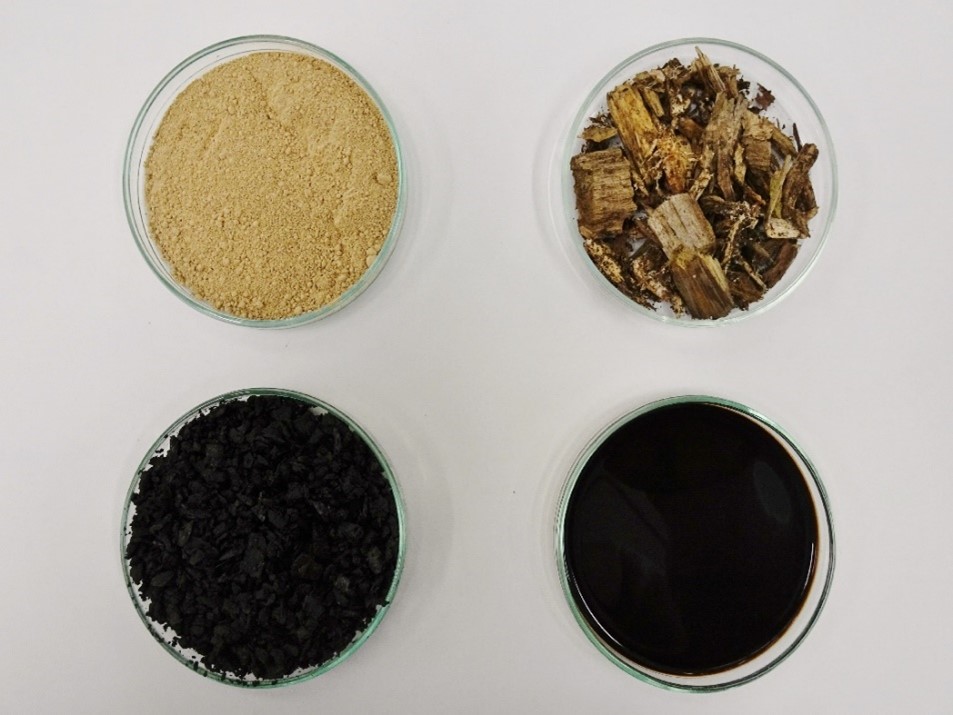Soil amendments are a necessary complement for plant species (Courtesy: USDA/Lance Cheung)
Authors: Anthony Manea and Michelle Leishman, 24th September 2021
The impervious surfaces that characterise urban areas often reduce rainfall infiltration and increase heat absorption (i.e., urban heat island effect), which together create a harsh, water-limited environment for plant growth. This water limitation can be made worse by the shifting rainfall patterns and increased temperatures associated with climate change. As a result, plants often find it difficult to thrive in these challenging urban environments.
Luckily, there is a range of soil additives that can be used to increase the ability of plants to extract water from the soil or to improve the water retention capacity of the soil (Fig 1). This in turn can enhance the resilience of plants to water stress, even when an urban drought kicks in.
Mycorrhizal fungi inoculants
Plant roots are typically what comes to mind when we think about how plants extract water from the soil. However, roots by themselves are not always capable of extracting enough water from the soil to allow plants to survive and thrive. To account for this potential shortfall, plants have evolved beneficial relationships with mycorrhizal fungi to ensure they never go thirsty. Over 80% of plant species can form relationships with mycorrhizal fungi, which live on the inside or surface of the plant’s roots. The branching filaments (hyphae) of these fungi extend out into the soil for several metres, where they obtain water and nutrients which they deliver to their host plant in exchange for carbohydrates.
Like all living organisms, the survival of mycorrhizal fungi in a landscape is driven by the prevalent environmental conditions. These conditions in urban areas are often harsh, making it difficult for many mycorrhizal fungi to thrive. This means that when plants are planted in urban areas, the mycorrhizal fungi that they need to form relationships with may be scarce or not present at all.
Luckily, this can easily be remedied with the use of commercially available mycorrhizal fungi inoculants. These inoculants in-solution can be applied directly to the root ball of the plant at the time of planting or on the soil surface after planting. It is generally recommended that multiple inoculations are carried out to ensure the mycorrhizal fungi can establish within the soil, giving them the best chance of forming beneficial relationships with the plants. This in turn will allow the plants to better explore the soil for water, thus enhancing their resilience to water stress.

Figure 1: Examples of soil additives. Starting from the left upper image, they include mycorrhizal fungi inoculants, mulch, biochar and seaweed extract biostimulant (photo credit: Anthony Manea).
Mulch and soil amendments
Enhancing a plant’s capability to extract water from the surrounding landscape is only half the story in ensuring its resilience to water stress. After all, plants can only extract water if there is water to extract. Mulching with a layer of material on the surface of the soil is the most commonly used strategy to improve soil water retention, as it reduces the evaporation of soil water and improves rainfall infiltration. It also has the added benefits of weed suppression, improving soil fertility, reducing soil erosion and enhancing the aesthetic appeal of plantings.
Soil structure also plays a major role in soil water retention. Improving soil structure can be achieved using a range of soil amendments, which are any organic material that is mixed into the soil to improve its physical properties. Commonly used soil amendments include biochar, compost and manure. Soil amendments also facilitate the proliferation of soil microbes (e.g., mycorrhizal fungi) by increasing soil fertility, reducing the toxicity of some molecules (e.g., allelochemicals) and providing habitat and resources for beneficial microbes and micro-organisms. All of these can enhance the water stress resilience of plants and help them to thrive under dry conditions.
Biostimulants
Mycorrhizal fungi, mulch and soil amendments all improve plant water stress resilience indirectly by increasing soil water availability. Biostimulants, on the other hand, improve plant water stress resilience directly by increasing plant tolerance to water stress, without altering the soil water available to the plant. Biostimulants are chemical extracts obtained from organic raw materials that contain one or more bioactive compounds. Common biostimulants include seaweed extract, humic acid and protein hydrolysates.
Biostimulants stimulate the production of anti-oxidant enzymes that protect the plant against environmental stressors such as heat and water stress. Similar to the application of mycorrhizal fungi inoculants, biostimulants can be applied directly to the root ball of the plant at the time of planting or to the soil surface after planting. Different biostimulants have different application rates, so it is recommended that manufacturer instructions are followed.

